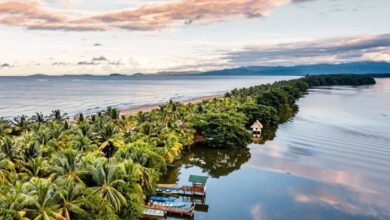How will climate change affect our diet?
Our diet can be affected by natural disasters caused by global warming .

Environmental threats would not only entail an abrupt loss of human life in weather events, but also a sudden collapse in food stability. / Photo: Pixabay
LatinAmerican Post | Jorge Francisco Vuelvas Lomeli
Listen to this article
Leer en español: ¿Cómo afectará el cambio climático a nuestra alimentación?
In a year like 2020, where humanity was forced to reflect on the insignificance of existence and the possibility of a humanitarian collapse is looming, it is pertinent to ask ourselves what challenges will the human race face in the near future? Recently in an interview with the Israeli historian and writer Yuval Noah Harari, he was asked if he considered the SARS-COV2 pandemic a real threat to humanity, to which he replied that there are definitely "worse threats to come . "
One of these threats referred to by the thinker was climate change, which despite being an issue on the political agenda since the end of the last century, few actions have been implemented to truly reduce the danger it entails for life. human environmental collapse.
Environmental threats would not only entail an abrupt loss of human life due to natural disasters, but also a sudden collapse in food stability that would exacerbate food insecurity in developing countries , and cause food shortages in large cities that they are positioned as the capitalist development cities of the time.
Climate change and its effects
There are different ways of understanding the conceptualization of climate change. The United Nations (UN) defines it as " a change in the weather attributed directly or indirectly to human activity that alters the composition of the global atmosphere and that adds to the natural variability of the climate observed during comparable periods of time ", according to the Article 1 of the United Nations Framework Convention on Climate Change.
Also read: A study suggests that large earthquakes are the cause of Arctic warming
The main effects of climate change are natural disasters of various types, such as tsunamis, hurricanes, tornadoes, floods, among others ; however, each of these effects are projected differently in a specific region. For example, in the Pacific islands, the climatic effects of rising sea levels will pose a devastating threat to human life, as entire communities are at risk of disappearing.
The aforementioned problem will not be seen in places where the altitude is several meters above sea level, so cities such as Bogotá, Mexico City or Quito will be little affected by this climatic threat; However, the large cities mentioned will have other types of devastating effects, since natural disasters that mainly affect the coasts will force the existence of a migratory phenomenon that can make the food security of a country collapse.
El cambio climático ya está afectando la producción agrícola y la seguridad alimentaria
El logro de #HambreCero para 2030 dependerá de la rapidez con la que ampliemos # AcciónClimática en la agricultura.#Agenda2030 #ObjetivosMundiales pic.twitter.com/e7iH0BQULU
— FAO Américas (@FAOAmericas) April 30, 2019
The Food and Agriculture Organization of the United Nations (FAO) warns that " a considerable number of species will be in danger of extinction with the increase in the average temperature of the planet . The wild varieties of the main crops are of particular concern. . Wild varieties are already under enormous pressure due to habitat loss and environmental degradation. Climate change, which could make the remaining habitats unsuitable for these species to survive, could be the cause of their extinction "
Other environmental threats to food security
Although some threats posed by climate change in society have already been mentioned, it is important to know what specific threats there are to the planet's food security. It is necessary to remember that there are 4 dimensions in food security according to FAO: availability, access, use and stability . Each of these dimensions would be at risk if there was a large-scale environmental threat , and as the years progress, climate change increases the probability of disarticulation of food security.
In the case of availability, FAO foresees that climate change will increase hunger and malnutrition , especially in rural communities “living in fragile environments, face an immediate and increasing risk of loss of crops and livestock, as well as as well as the reduced availability of marine, forestry and aquaculture products ”. The above product of extreme climatic episodes.
With regard to access to food, it will be these same climatic episodes that will prevent the food security of the populations from being maintained, especially due to “the loss of their assets and the lack of adequate insurance coverage. The ability of the rural population to live with the impacts produced by climate change depends on the cultural context and existing policies , as well as socioeconomic factors such as gender, household composition, age and the distribution of assets in home".
Faced with this scenario, it will be impossible for the whole of society to fulfill the dimension of food utilization, because if the rates of environmental degradation continue, not even in large cities will it be possible to have nutritious and harmless food for society . Food stability would be diminished, not only by the impossibility of producing food on a large scale, but also by the commercial protectionism that countries would implement and the international conflicts that would lead to the lack of food in society .




